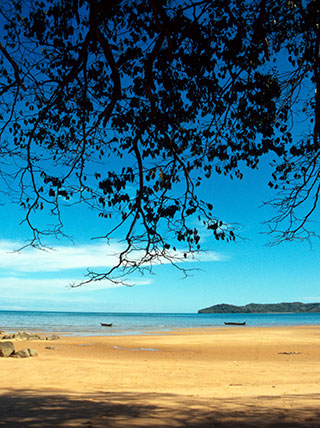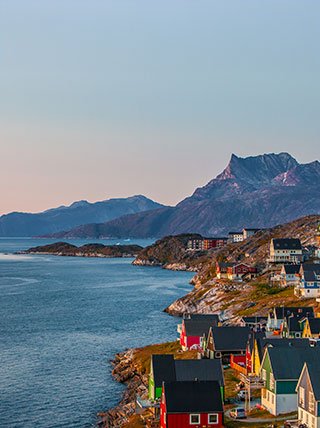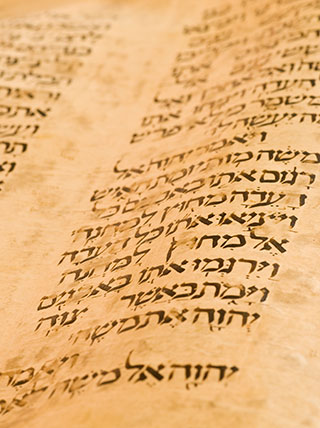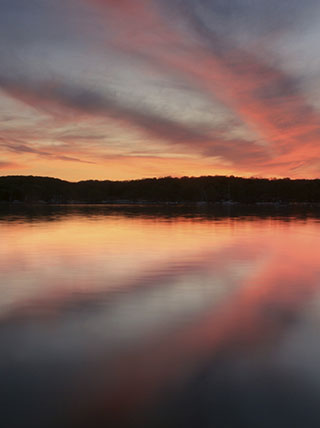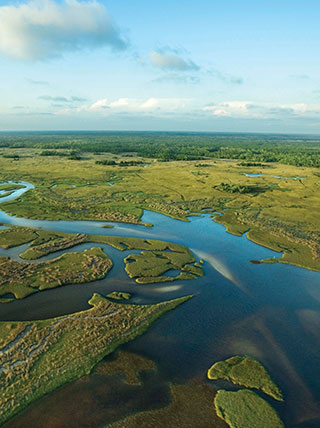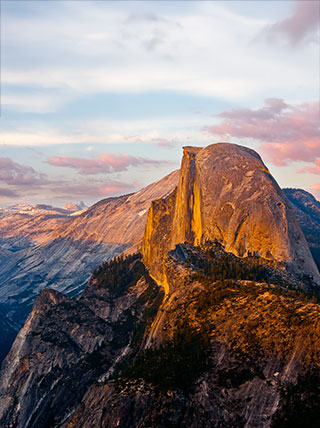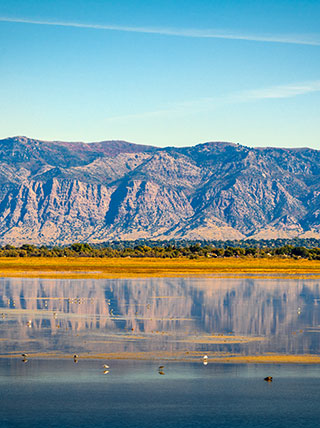Online Program
Adventures Online: Easter Island & the Mystery and Legacy of Rapi Nui
Program No. 24215RJ
Join three unique experts: a native historian, an archaeologist with field experience, and a local guide from Easter Island, as they share firsthand knowledge and rich history.
Enroll with Confidence
We want your Road Scholar learning adventure to be something to look forward to—not worry about. Learn more
Protecting the Environment
We offset a portion of the emissions created by your travel. Learn more
Itinerary
While we make every effort to ensure the accuracy of our published materials, programs are typically advertised more than a year prior to their start date.
Day
1
Orientation, Rapa Nui Origins
Location:
From the comfort of your own home.
Activity Note
Today’s session will begin at 1:00 p.m. Eastern Time and end at 4:00 p.m.
Afternoon:
1:00 p.m. Welcome, Orientation, Introductions. Our Group Leader will greet everyone and review the program theme, the daily schedule and any changes, Zoom meeting protocols, roles and responsibilities, and answer any questions. We will then say hello to our fellow Road Scholars. 1:20 p.m. Field Trip. An introduction to the island, we will begin to get acquainted with the island and its highlights by exploring iconic places in the village of Hanga Roa. We’ll learn about what the Rapa Nui people called “Te Pito O Te Henua,” roughly translated as “Navel of the World.” Covering only 66 square miles, this is the most remote island on earth, 2,000 miles from Tahiti and 2,500 miles from Chile. Rapa Nui National Park is a UNESCO-designated World Heritage Site. From the UNESCO inscription: “Rapa Nui, the indigenous name of Easter Island, bears witness to a unique cultural phenomenon. A society of Polynesian origin that settled there c. A.D. 300 established a powerful, imaginative and original tradition of monumental sculpture and architecture, free from any external influence. From the 10th to the 16th century this society built shrines and erected enormous stone figures known as moai, which created an unrivalled cultural landscape that continues to fascinate people throughout the world.” 1:50 p.m. Q&A session. 2:00 p.m. Break. 2:10 p.m. Lecture. We will trace the origins of the first settlers arriving from Polynesia and explore the oral traditions and facts that explain the arrival of the first settlers. 2:50 p.m. Q&A. 3:00 p.m. Break. 3:10 p.m. Facilitated Discussion with expert historian. Lets Talk About - Americans & Easter Island, William Malloy, Symbols /Tatoo, Kava Kava 3:50 p.m. Q&A/Wrap-up 4:00 p.m. Today’s session will end.
Day
2
Megalithic Culture
Location:
From the comfort of your own home.
Activity Note
Today’s session will begin at 1:00 p.m. Eastern Time and end at 4:00 p.m.
Afternoon:
1:00 p.m. Review of the day with our Group Leader. 1:05 p.m. Lecture. Ahu & Moai The emergence of a megalithic culture. Our lecture with noted archeologist will focus on the culture of the famous statues of the island, how they were made, their meanings. We will also learn about the AHUs, the ceremonial platforms for the statues. 1:50 p.m. Q&A 2:00 p.m. Break 2:10 p.m. Field trip. We will explore iconic sites on the island related to the worship of the statues, the place where they were built (Ranu Raraku), an ancient village (Akahanga) and iconic ahus such as Tongariki and Nau nau. 2:50 p.m. Q&A 3:00 p.m. Break 3:10 p.m. Facilitated Discussion with expert archeologist. Let’s Talk About - How they moved the statues, the Mystery of Rongo Rongo Tablets, the collapse of the Statues & Ahus worship 3:50 p.m. Q&A/Wrap Up 4:00 p.m. Today’s session will end.
Day
3
Modern Era
Location:
From the comfort of your own home.
Activity Note
Today’s session will begin at 1:00 p.m. Eastern Time and end at 4:00 p.m.
Afternoon:
1:00 p.m. Review of the day. 1:05 p.m. Lecture. We will learn about the contact the island has had with the Western World since 1722. We will learn about the dramatic slavery raids and epidemic diseases in 1862, the annexation to Chile in 1888, the lease to a British sheep company, the new deal since 1966 with Chile and the Easter Island Law. 1:50 p.m. Q&A 2:00 p.m. Break 2:10 p.m. Field trip. We will explore the famous Orongo village, where we will learn about the “Birdman ceremony” and its implication in the new world of worship the bird MANUTARA. With views of the Ranu Kau volcano, we will visit the visitor center and end enjoying the petroglyphs dedicated to the bird. 2:50 p.m. Q&A. 3:00 p.m. Break. 3:10 p.m. Facilitated Discussion with a local expert. Let’s Talk About - Tapaty festival, women’s role in the Rapa Nui society, daily life on the island, impact of tourism. 3:50 p.m. Q&A/Wrap-up 4:00 p.m. This concludes our program.



